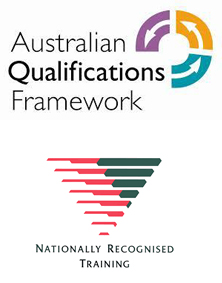Learn CPR – You will be glad you did.
Application
This unit describes the skills and knowledge required to perform cardiopulmonary resuscitation (CPR) in line with the Australian Resuscitation Council (ARC) Guidelines.
This unit applies to all workers who may be required to provide CPR, in a range of situations, including community and workplace settings.
As part of the NSW Government Skilling for Recovery Program the following course is now available FEE FREE to eligible applicants.
All programs are nationally recognised.
Enrolments close 1 June 2021 and candidates will have until 1 December to attend and complete training.
Priority will be given to candidates who are in the following groups. Redeployment and Youth.
Courses may book out early and places are not guaranteed. Funding is only available for NSW Residents.
Book your place HERE >>>>>>
You will learn :
Performance Evidence
The candidate must show evidence of the ability to complete tasks outlined in elements and performance criteria of this unit, manage tasks and manage contingencies in the context of the job role.
There must be evidence that the candidate has completed the following tasks in line with state/territory regulations, first aid codes of practice, Australian Resuscitation Council (ARC) guidelines and workplace procedures:
- Followed DRSABCD in line with ARC guidelines, including:
- performed at least 2 minutes of uninterrupted single rescuer cardiopulmonary resuscitation (CPR) (5 cycles of both compressions and ventilations) on an adult resuscitation manikin placed on the floor
- performed at least 2 minutes of uninterrupted single rescuer CPR (5 cycles both compressions and ventilations) on an infant resuscitation manikin placed on a firm surface
- responded appropriately in the event of regurgitation or vomiting
- managed the unconscious breathing casualty
- followed single rescue procedure, including the demonstration of a rotation of operators with minimal interruptions to compressions
- followed the prompts of an automated external defibrillator (AED)
- Responded to at least one simulated first aid scenario contextualised to the candidate’s workplace/community setting, including:
- demonstrated safe manual handling techniques
- provided an accurate verbal or written report of the incident
Knowledge Evidence
The candidate must be able to demonstrate essential knowledge required to effectively complete tasks outlined in elements and performance criteria of this unit, manage tasks and manage contingencies in the context of the work role. This includes knowledge of:
- State/Territory regulations, first aid codes of practice and workplace procedures including:
- ARC Guidelines relevant to the provision of CPR
- safe work practices to minimise risks and potential hazards
- infection control principles and procedures, including use of standard precautions
- requirements for currency of skill and knowledge
- Legal, workplace and community considerations, including:
- awareness of potential need for stress-management techniques and available support following an emergency situation
- duty of care requirements
- respectful behaviour towards a casualty
- own skills and limitations
- consent
- privacy and confidentiality requirements
- importance of debriefing
- Considerations when providing CPR, including:
- airway obstruction due to body position
- appropriate duration and cessation of CPR
- appropriate use of an AED
- chain of survival
- standard precautions
- Basic anatomy and physiology relating to:
- how to recognise a person is not breathing normally
- chest
- response/consciousness
- upper airway and effect of positional change
Assessment Conditions
Skills must be demonstrated working individually in an environment that provides realistic in-depth, industry-validated scenarios and simulations to assess candidates’ skills and knowledge.
Assessment resources must include:
- adult and infant resuscitation manikins in line with ARC Guidelines for the purpose of assessment of CPR procedures
- AED training device
- workplace injury, trauma and/or illness record, or other appropriate workplace incident report form
Simulated assessment environments must simulate the real-life working environment where these skills and knowledge would be performed, with all the relevant equipment and resources of that working environment.

